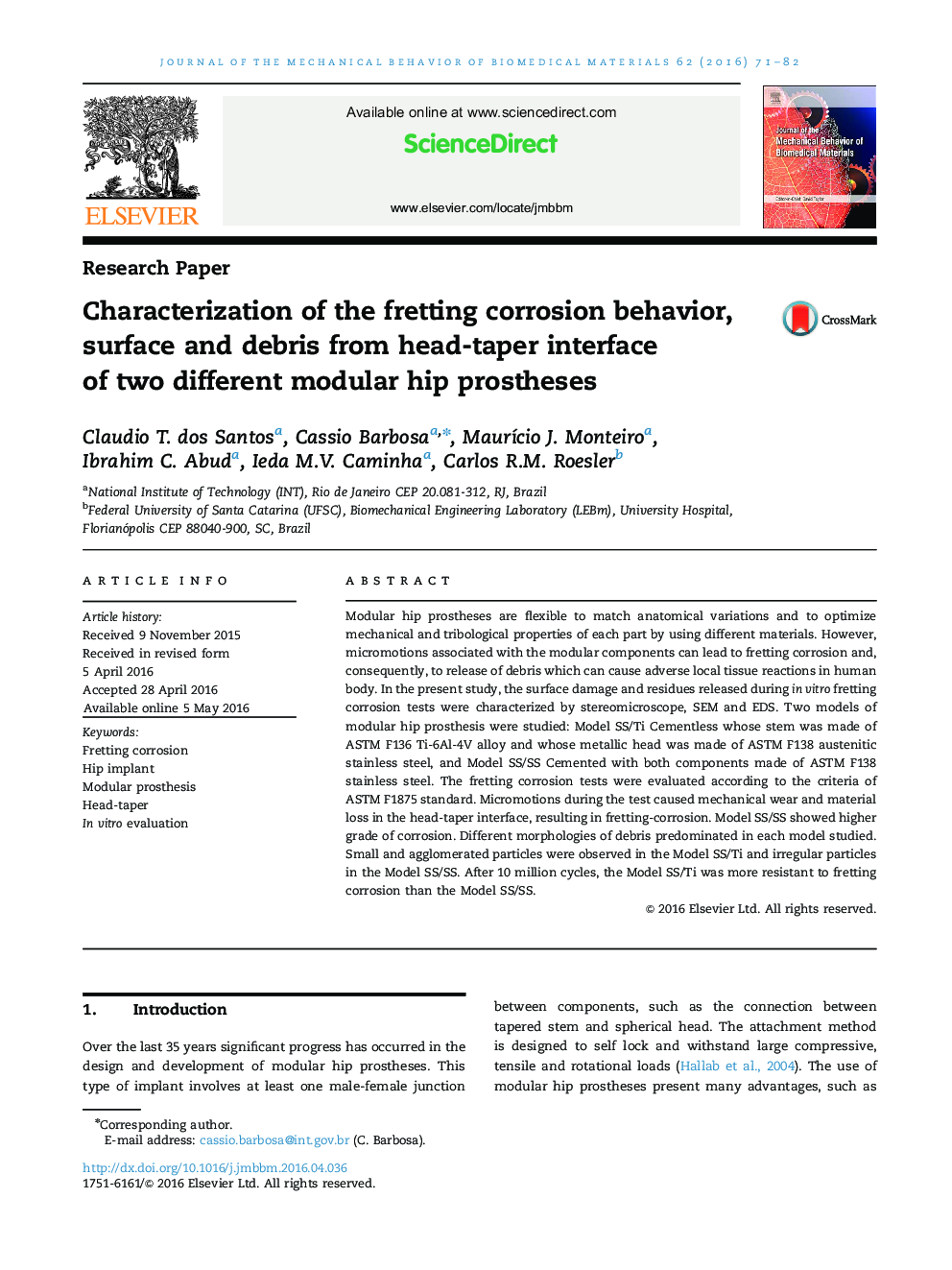| Article ID | Journal | Published Year | Pages | File Type |
|---|---|---|---|---|
| 7207784 | Journal of the Mechanical Behavior of Biomedical Materials | 2016 | 12 Pages |
Abstract
Modular hip prostheses are flexible to match anatomical variations and to optimize mechanical and tribological properties of each part by using different materials. However, micromotions associated with the modular components can lead to fretting corrosion and, consequently, to release of debris which can cause adverse local tissue reactions in human body. In the present study, the surface damage and residues released during in vitro fretting corrosion tests were characterized by stereomicroscope, SEM and EDS. Two models of modular hip prosthesis were studied: Model SS/Ti Cementless whose stem was made of ASTM F136 Ti-6Al-4V alloy and whose metallic head was made of ASTM F138 austenitic stainless steel, and Model SS/SS Cemented with both components made of ASTM F138 stainless steel. The fretting corrosion tests were evaluated according to the criteria of ASTM F1875 standard. Micromotions during the test caused mechanical wear and material loss in the head-taper interface, resulting in fretting-corrosion. Model SS/SS showed higher grade of corrosion. Different morphologies of debris predominated in each model studied. Small and agglomerated particles were observed in the Model SS/Ti and irregular particles in the Model SS/SS. After 10 million cycles, the Model SS/Ti was more resistant to fretting corrosion than the Model SS/SS.
Related Topics
Physical Sciences and Engineering
Engineering
Biomedical Engineering
Authors
Claudio T. dos Santos, Cassio Barbosa, MaurÃcio J. Monteiro, Ibrahim C. Abud, Ieda M.V. Caminha, Carlos R.M. Roesler,
